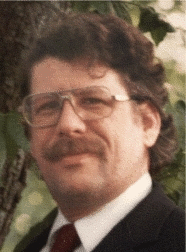CQOD: 12/24/07 -- Mary Elizabeth Coleridge: I saw a stable
Christian Quotation of the Day
December 24, 2007Christmas Eve
Then Simeon blessed them and said to Mary, his mother: "This child is destined to cause the falling and rising of many in Israel, and to be a sign that will be spoken against, so that the thoughts of many hearts will be revealed. And a sword will pierce your own soul too."
-- Luke 2:34,35 (NIV)
Quotation:
I saw a stable, low and very bare,
A little child in a manger.
The oxen knew Him, had Him in their care,
To men He was a stranger,
The safety of the world was lying there,
And the world’s danger.
... Mary Elizabeth Coleridge (1861-1907)
Dear friends of CQOD,
This is a time when we certainly pay close attention to our physical reality, as we celebrate and eat with family and friends. For us, to be a person is to have a body, to sustain it, to experience pleasure through it, and to have grown within it. At Christmas dinners, I have often recalled in recent years that Jesus, after His resurrection, demonstrated His return to a bodily condition by eating with the disciples.
It is simple enough: we eat food; we take in nourishment. Sometimes, it is a social occasion, which Jesus often enjoyed. But why would Jesus need to eat after His resurrection? Perhaps He did not need to. But He did so, because He was a living man. In the early years of the church, there were some who claimed that Jesus was purely divine and only appeared to be a man. Luke went out of their way to assure their readers that Jesus was both divine and human, and that He remained so even after resurrection from death: "... he was known of them in breaking of bread." Luke 24:35 (KJV) "They gave him a piece of broiled fish, and he took it and ate it in their presence." Luke 24:42,43 (NIV)
The Nativity was the start of that condition. The Son of God, begotten by the Father, submitted to the most human of conditions, being born of woman, being a helpless baby, then a child, then a teenager, and then a young man, learning, growing, and eating. When life was restored to Him after the crucifixion, He was still a man.
Paul, Peter, and John all emphasize that Jesus came "in the flesh." In that respect, He is like us. While He was in the manger, we could look on Him and love Him, for He was made from dust like us. From the cross, Jesus looked on us and loved us, for we were made for eternal life like His.
May the Lord of Peace remain with you and your family in the days to come.
RMA
See Believer's Desktop Companion 2007
http://www.cqod.com/cqoddtcb.html
CQOD Compilation Copyright 2007, Robert McAnally Adams, Curator
CQOD Home Page: http://www.cqod.com/
Subscription info: http://www.cqod.com/cqodlist.htm
Comments and problems: email to curator@cqod.com




0 Comments:
Post a Comment
<< Home